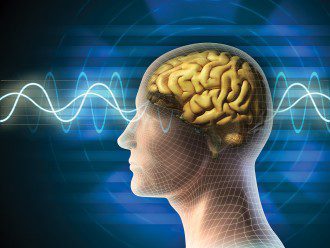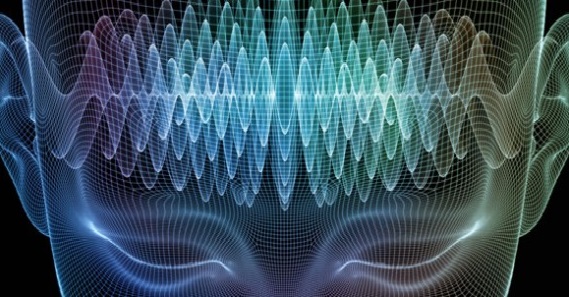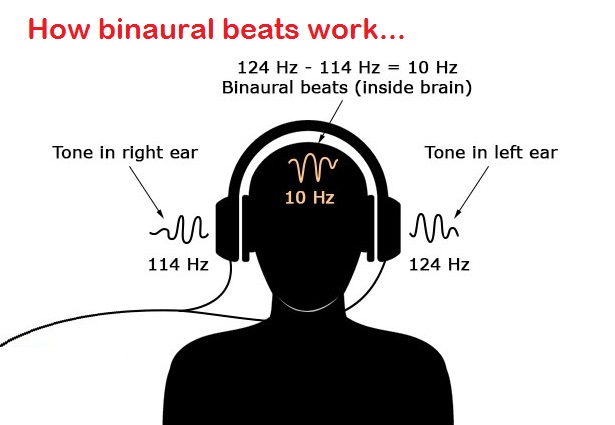Guest Writer for Wake Up World
The brain and consciousness are inextricably linked, meaning that shifts in one of these aspects of the self produce corresponding shifts in the other. This is in large part because consciousness is not restricted to existing only in physical form and is in fact a non-local field of energy [1,2,3,4,5]. This means that the brain is simply an organ which interfaces the mind with the physical reality.
To draw an analogy, it is a translator of physical sensation and other experiential phenomenon from the body to the mind and from mind to the body. The brain allows the mind to control and move through the body, but the mind exists as an energetic field independently of the brain, which is why scientists have never been able to pinpoint consciousness to any specific part of the brain or to the brain itself — because it does not arise from the brain. Metaphorically speaking, the brain is simply a tool that the non-local mind uses to interface with and experience physical reality.
With the brain being the primary organ through which consciousness experiences reality, its health and functioning affects our experience of consciousness in a significant way. If our brain is undernourished, nutrient deficient, stressed out or in chaotic brainwave patterns, our experience of consciousness in physical form (reality) will be diminished, which means that we’ll tend to experience more stress, depression, anxiety, fear, frustration, mental cloudiness and so on with a noticeable diminishment of higher, intuitive-transpersonal mental functioning, in other words, a shutting down of our higher intuitive abilities and spiritual awareness.
On the other hand, if our brain is nourished and relaxed with the two hemispheres operating in sync and harmony, our experience of reality will be exponentially improved (Learn more about how consciousness interacts with reality here: how to evolve your consciousness). We’ll find ourselves experiencing more inspiration, creativity, intuition, happiness, clarity, peace, joy and other positive emotional states. While there are many factors that influence our brain’s health and functioning, and hence our expression of consciousness, including our deeper psychodynamics, our diet and nutrition, and level of toxicity from environmental pollutants, among other things, I’d like to focus in on one specific factor that is easy to control and has a very significant positive impact on your experience of reality as far as all these things go. And that’s your dominant brainwave state.
Brainwave Patterns and Consciousness
In case you’ve never heard of brainwaves before, I’ll explain what they are and why you should care about them, as well as give a brief overview of the different brainwave states and how they correspond to your consciousness and experience of life. Then we’ll dive into six powerful practices for shifting them in a positive direction in order to expand your consciousness and harmonize brain function.
The brain operates largely through electrical signals sent between approximately 100 billion neurons (nerve cells) spread out across different regions. The firing of these neurons happens rapidly and creates wavelike rhythms of activation and rest, which can be measured by sensitive machinery. The rate at which the neurons fire and the synchronicity between the firing generates varying wave frequencies, which scientists have mapped, categorized and correlated to different states of consciousness as follows:
Gamma Waves: 27 Hz and up
Gamma is associated with expanded states of awareness, heightened intuition and creativity, activation of the pineal gland, feelings of peace, joy and oneness, enhanced mental clarity and focus, formation of ideas, language and memory processing, and various types of learning. Gamma waves have been identified as a characteristic brainwave pattern of regular meditators and monks and are present when we are dreaming, although they can arise in normal waking consciousness as well.
Beta Waves: 12 Hz – 27 Hz
Wide awake. This is the predominant mental state most people are in during the day and the majority of their waking lives. Although this state tends to be uneventful, don’t underestimate its importance. Many people who lack sufficient beta activity may experience symptoms of mental or emotional disorders such as depression or ADHD, and low SMR production (a sub-range of beta at 12-15 Hz) may be related to insomnia. Stimulating beta activity can improve emotional stability, energy levels, attentiveness and concentration in certain situations, however, most people notice more benefit from shifting their brainwaves into other less frequently experienced states.
Alpha Waves: 8 Hz – 12 Hz
Awake but relaxed and not processing much information. When you get up in the morning and just before you fall asleep, you are naturally in this state. When you close your eyes your brain automatically starts producing more alpha waves. Many studies monitoring the EEG activity of experienced meditators have revealed strong increases in alpha activity. Alpha activity has also been connected to the ability to recall memories, lessened discomfort and pain, and reductions in stress and anxiety.
Theta Waves: 3 Hz – 8 Hz
Light sleep or extreme relaxation. Theta is also a very receptive mental state that has proven useful for hypnotherapy, as well as self-hypnosis using recorded affirmations and suggestions. Theta waves have also been correlated with bursts of inspiration, creativity and vivid visualizations.
Delta Waves: 0.2 Hz – 3 Hz
Deep, dreamless sleep. Delta is the slowest band of brainwaves. When your dominant brainwave is delta, your body is healing itself and “resetting” its internal clocks. You do not dream in this state and are completely unconscious. Delta is also associated with very deep states of meditation as well as healing and rejuvenation of the brain and body, which correlates to Stage 4 REM sleep, where Delta waves are most frequently experienced.
Clearly there are great benefits to be had by shifting your brainwaves into highly specific states, allowing your consciousness to experience reality through different ‘lenses’ that help it focus in positive, expansive and often times deeply healing ways.
Exercises to Shift Your Brainwave State
The exercises and nutraceuticals below have all been proven to shift brainwave patterns and improve trans-hemispheric communication in the brain, allowing for an expanded experience of consciousness. They are a blend of both organic, ancient practices and more modern technological advances, allowing you to blend the best of both worlds to your liking and suit your specific needs.
1. Deep Rhythmic Breathing Meditation
Brainwave States Cultivated: Gamma, Alpha, Theta, Delta
Meditation is one of the easiest and fastest ways to alter your brainwave state, and the longer and more frequently you meditate, the longer the brainwave state shifts last. Regular meditators tend to experience a semi-permanent to permanent brainwave spectrum shift toward gamma, alpha and theta as they literally recondition their neural pathways and stimulate new growth that reinforces these patterns [Liou, Litz, Udo,7,8,9]. Furthermore, this is what I call an organic method of altering brainwave state, meaning that the practice is initiated by the individual from within without relying on supplements or various technologies. This, of course, is ideal — to empower and activate one’s own innate capacity for evolutionary change.
Perhaps the best way I have found to do this is through what I call ‘Deep Rhythmic Breathing Meditation,’ although other forms of meditation are certainly effective for achieving these ends as well. It’s a simple practice:
- Find a comfortable seated position where your spine is as straight as possible while still being relaxed and free of tension. Feel free to use pillows, props, chairs, floor, etc. Whatever works for you. Hands should be comfortably placed in your lap or whatever other position you prefer.
- Once you have a found a comfortable seated position, close your eyes and take a few deep breaths in through your nose and out through your mouth to relax further and then begin the Ujjayi breath, an ancient Daoist and Yogic form of breathing, which is described as follows:
- Take an inhalation that is slightly deeper than normal. With your mouth closed, exhale through your nose while constricting your throat muscles. If you are doing this correctly, you should sound like Darth Vader from Star Wars. Some also liken this sound to the sound of the ocean.
- Another way to get the hang of this practice is to try exhaling the sound “haaaaah” with your mouth open. Now make a similar sound with your mouth closed, feeling the outflow of air through your nasal passages. Once you have mastered this on the outflow, use the same method for the inflow breath, gently constricting your throat as you inhale.
You will continue to use the Ujjayi breath throughout the entire meditation. The Ujjayi breath allows you to slow down and lengthen your breath significantly versus normal breathing methods.
- Keep your awareness on your breath throughout the meditation and with each breath inhale a little bit more air and slightly deeper. With every out breath exhale a little bit more slowly and deeply. This is not a race, let it unfold naturally.
- Keep repeating this indefinitely. One single breath may end up lasting a minute or more. As you continue to breath deeply you will find an exquisite and extraordinarily pleasurable peace wash over your mind and body. You will feel your brain moving into a state of deep harmony and relaxation. It is not uncommon to become very inspired and have intuitive insights flash into your mind. You will find your mood elevated and many experience waves of bliss. All these phenomenon and anything else you experience are in large part as a result of your brain waves moving into alpha, delta, theta and gamma wave states.
Enjoy the aftereffects for hours and sometimes even days. Repeat daily for maximum impact and lasting effects. Studies have found measurable alterations in brain size and genetic markers of stress reduction in as little as a few weeks.[11,12]
2. Alternate Nostril Breathing (Nadi Shodhana)
Brainwave States Cultivated: Alpha (short practice), Gamma & Theta (long practice)
The brain is split into two hemispheres, connected by the corpus callosum, which is a broad band of nerve fibers that sends neural signals between the two and facilitates communication within the brain. Practices that synchronize the functioning of the two hemispheres have the effect of harmonizing the brain and shifting brainwave state away from beta and into the positive end of the spectrum. There are a number of ways to do this, including the meditation above, however each practice has its own unique effects and lends itself towards giving rise to specific brainwave states, each with their own nuances and benefits.
Alternate Nostril Breathing (Sanskrit: Nadi Shodhana) is an ancient breathing practice that has the effect of altering brainwave patterns by working to synchronize brain hemisphere communication specifically. Although this practice works on a number of different levels to bring balance and harmony to the body and mind (energetically, emotionally, mentally), it primarily influences brain function due to the fact that the left hemisphere of the brain controls the right side of the body and the right hemisphere of the brain controls the left side of the body. Through the practice of this technique, you are forcing the mind and body to constantly alter attention and muscle control between each side/hemisphere, and hence it stimulates communication and synchronization between the two through the rhythmic movements and breathing patterns. This shifts brainwaves into an alpha state during shorter practice (1-5 breath cycles) and even into gamma and theta (5 or more breath cycles).
Alternate Nostril Breathing (Nadi Shodhana):
- Take a comfortable and tall seat, making sure your spine is straight and your heart is open.
- Relax your left palm comfortably into your lap and bring your right hand just in front of your face.
- With your right hand, bring your pointer finger and middle finger to rest between your eyebrows, lightly using them as an anchor. The fingers we’ll be actively using are the thumb and ring finger.
- Close your eyes and take a deep breath in and out through your nose.
- Close your right nostril with your right thumb. Inhale through the left nostril slowly and steadily.
- Close the left nostril with your ring finger so both nostrils are held closed; retain your breath at the top of the inhale for a brief pause.
- Open your right nostril and release the breath slowly through the right side; pause briefly at the bottom of the exhale.
- Inhale through the right side slowly.
- Hold both nostrils closed (with ring finger and thumb).
- Open your left nostril and release breath slowly through the left side. Pause briefly at the bottom.
- Repeat as many cycles as you like, although 5-10 is a good starting point, allowing your mind to follow your inhales and exhales.
Steps 5-9 represent one complete cycle of alternate nostril breathing. If you’re moving through the sequence slowly, one cycle should take you about 20-40 seconds. Repeat daily for cumulative effects. Can be used as often as you’d like.
Advanced Practice: Do a few rounds of alternate nostril breathing before you meditate to help you shift your brainwave state more rapidly.
3. Binaural/Monaural Beats
Brainwave States Cultivated: Gamma, Alpha, Theta, Delta, depending on the music.
Sound is one of the most powerful influencers of mood and brainwave states known to man. Research pioneered in large part by Robert Monroe in the 1950’s and 60’s showed that by sending two different sounds with slightly different frequencies, one into each ear, at the same time, caused a standing wave in the brain of a certain frequency that the brain would eventually match if exposed to long enough. These technologies are widely known as binaural beats, with other variations surfacing in recent decades including monaural beats and isochronic tones, which are somewhat similar variations of this original technology.
Binaural tones are not necessarily melodic in nature, so they are often combined with more sensually pleasing music to cover them up, however, this does not reduce their effectiveness. It is primarily the rhythmic desynchronization of two sounds played through different ears that produces the effects — so long as headphones or properly placed stereo speakers are used, the brain will respond appropriately.
Binaural and monaural beats can be designed to synchronize brainwaves into any specific frequency the creator of the sounds desires, and therefore the experience can be much more precise and controlled than one can achieve with more organic methods, which are not quite as well understood. With binaural and monaural beats you can essentially pick your flavor of brainwave state, which can be very useful in achieving specific ends, for example, if one wants to deeply relax, then they could listen to a delta-wave-inducing track, or if one wants enhanced creativity and intuition, they could listen to a gamma-wave-inducing track.
4. Bilateral Eye Movements
Brainwave States Cultivated: Gamma, Alpha
Perhaps one of the easiest and quickest ways to generate hemispheric coherence in the brain and shift the dominant brainwave patterns is through the use of bilateral eye movements, which are a component of Eye Movement Desensitization and Reprocessing (EMDR) therapy. EMDR has been gaining popularity in recent years for its use in treating PTSD and emotional trauma, among other things. Studies have shown that specific exercises from the process have a measurable impact on hemispheric synchronization and tend to shift brainwave state toward the gamma end of the spectrum, although alpha wave patterns have been observed as well. [14]
The practice is simple: spend up to a minute or so shifting your eyes back and forth from left to right in rapid succession, without straining. If you are sensitive, you should be able to feel your mental coherence increasing as you practice.
For an advanced practice: try using the movements to work through difficult emotions as they come up. When you begin to feel a negative emotion surface, breath deep and begin the eye movements. Notice how things shift for you as you go through the process.
5. Resonant Vowel Sound Chanting & Organic Instrumentation
Brainwave States Cultivated: Gamma, Alpha, Theta
As mentioned previously, sound is a powerful catalyst for shifting brainwave states, but that also applies to sounds you generate. For millennia before the advent of binaural beats, various spiritual traditions discovered that specific sounds could influence consciousness in dramatic ways. Although the mechanisms by which this occurs are not fully understood, specific forms of chanting and instrumentation have been shown to reliably shift brainwaves towards the positive end of the spectrum.
One of the easiest to begin practicing on your own is resonant vowel sound chanting, which is essentially saying and holding a letter for an extended period of time, adjusting the shape of your mouth, tongue and throat as well as the pitch of the toning to facilitate the feeling of resonance in the body and mind. By shifting these four elements you can literally feel the sound in different parts of the body. As such, shifting these elements so that you feel the sound in the head tends to have the most profound impact on brainwave state, although feeling sounds resonating in other parts of the body can still affect brainwave state in addition to having other noticeable, beneficial effects in the body.
Try starting with the letter ‘O’. Simply take a deep breath in and on the exhale begin saying and holding the letter ‘O’ as long as you can without straining. It can help to close your eyes to tune into the subtleties of feeling in the body. Try experimenting with different vowels and letters. Some good ones to start with are: O, A, E, I, U, M as these lend themselves best to holding for extended periods of time. The widely known ‘Om’ or ‘Aum’ combines multiple vowels and consonants in a single tone. You can practice as long as you’d like although benefits tend to plateau around the ten-minute mark in my experience, and noticeable shifts can be felt much sooner than that. Even just one or two repetitions can help shift you into more coherence.
The beauty of toning and chanting is that everything you need is within you. However, certain musical instruments are also known to operate by similar principles. In some way shape or form, all sound shifts brainwave patterns to some degree, but there is an entire class of instruments that are truly designed for this specific purpose. Singing bowls (Tibetan or crystal), gongs, handbells, chimes, didgeridoos, flutes, even certain types of drums and other more exotic instruments have been used by ancient cultures worldwide to induce expanded consciousness and brain coherence for thousands of years.
6. Green Tea/L-Theanine
Brainwave States Cultivated: Alpha
Green tea has long been revered in China, Japan and other ancient cultures for its legendary health benefits, but few know that it positively affects brainwave state as well. That’s because green tea is rich in L-Theanine, a naturally occurring amino acid that has been shown in numerous studies to shift brainwaves into the alpha spectrum quite readily. Interestingly, L-Theanine also helps the body process caffeine more effectively and gently, helping to mitigate the crash many experience a few hours after ingesting it, which generally makes green tea a more balancing and less disruptive stimulant herb than coffee or other caffeinated plants. While L-Theanine is also available in a supplement form, which may be appropriate for certain therapeutic uses and for those who avoid caffeine, whole food sources are otherwise ideal. As is common with plants, there are likely other synergistic, as of yet unidentified compounds that complement and enhance the effects of L-Theanine in green tea.
Also by Justin Faerman:
Sources
- Jahn RG, Dunne BJ. 1987. Margins of Reality: The Role of Consciousness in the Physical World. New York: Harcourt Brace Jovanovich.
- Radin D. 1997. The Conscious Universe. San Francisco: Harper San Francisco.
- H. Stapp, in Nadeau R, and Kafatos, M., The Nonlocal Universe: The new physics and matters of the mind, Oxford University Press. (1999).
- Radin DI, Nelson RD. 1989. Evidence for consciousness-related anomalies in random physical systems. Foundations of Physics. 19:1499-1514.
- R. Targ and J. Katra, Miracles of Mind: Exploring Nonlocal Consciousness and Spiritual Healing, New World Library, Novato CA. (1998).
- transparentcorp.com/products/np/brainwaves.php
- Liou, Chien-Hui, Hsieh, Chang-Wei, Hsieh, Chao-Hsien, Lee, Si-Chen, Chen, Jyh-Horng, and Wang, Chi-Hong. Correlation between Pineal Activation and Religious Meditation Observed by Functional Magnetic Resonance Imaging. Available from Nature Precedings
- Lutz A, Greischar LL, Rawlings NB, Ricard M, Davidson RJ, Long-term meditators self-induce high-amplitude gamma synchrony during mental practice. Proc Natl Acad Sci USA 101:16369–16373 (2004)
- Udo Will, Eric Berg, Brain wave synchronization and entrainment to periodic acoustic stimuli, Neuroscience Letters, Volume 424, Issue 1, 31 August 2007, Pages 55-60, ISSN 0304-3940, 10.1016/j.neulet.2007.07.036.
- http://www.chopra.com/ujjayi-breath
- http://news.harvard.edu/gazette/story/2006/02/meditation-found-to-increase-brain-size/
- http://www.consciouslifestylemag.com/meditation-and-the-brain-makes-you-smarter/
- http://www.chopra.com/ccl/nadi-shodhana-how-to-practice-alternate-nostril-breathing
- http://www.ncbi.nlm.nih.gov/pubmed/17984782
About the author:
Justin Faerman is a visionary change-agent, entrepreneur and healer dedicated to evolving global consciousness, bridging science and spirituality and spreading enlightened ideas on both an individual and societal level. He is the co-founder of Conscious Lifestyle Magazine and a sought after coach and teacher, known for his pioneering work in the area of flow. He is largely focused on applied spirituality, which is translating abstract spiritual concepts and ideas into practical, actionable techniques for creating a deeply fulfilling, prosperous life.
Connect with Justin at ConsciousLifestyleMag.com and ArtOfFlowCoaching.com.

If you've ever found value in our articles, we'd greatly appreciate your support by purchasing Mindful Meditation Techniques for Kids - A Practical Guide for Adults to Empower Kids with the Gift of Inner Peace and Resilience for Life.
In the spirit of mindfulness, we encourage you to choose the paperback version. Delve into its pages away from screen glare and notifications, allowing yourself to fully immerse in the transformative practices within. The physical book enriches the learning process and serves as a tangible commitment to mindfulness, easily shared among family and friends.
Over the past few years, Wake Up World has faced significant online censorship, impacting our financial ability to stay online. Instead of soliciting donations, we're exploring win-win solutions with our readers to remain financially viable. Moving into book publishing, we hope to secure ongoing funds to continue our mission. With over 8,500 articles published in the past 13 years, we are committed to keeping our content free and accessible to everyone, without resorting to a paywall.











